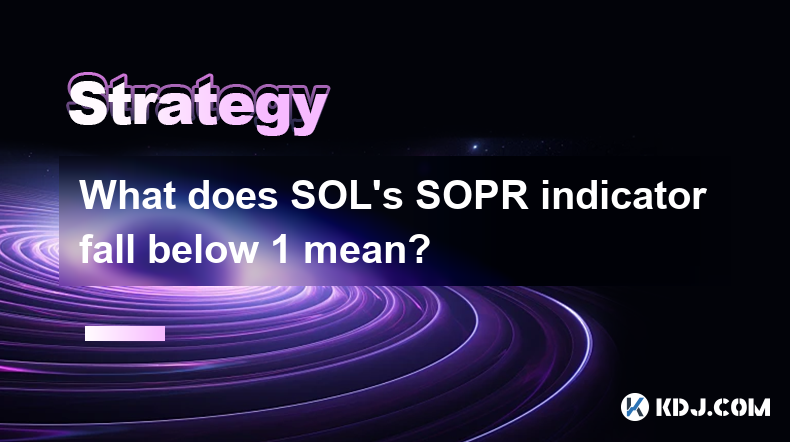-
 Bitcoin
Bitcoin $120400
1.77% -
 Ethereum
Ethereum $3615
7.90% -
 XRP
XRP $3.580
17.84% -
 Tether USDt
Tether USDt $1.001
0.06% -
 BNB
BNB $729.4
1.25% -
 Solana
Solana $179.9
5.04% -
 USDC
USDC $0.0000
0.01% -
 Dogecoin
Dogecoin $0.2311
8.22% -
 TRON
TRON $0.3226
4.04% -
 Cardano
Cardano $0.8490
12.85% -
 Hyperliquid
Hyperliquid $46.45
0.72% -
 Stellar
Stellar $0.4913
8.54% -
 Sui
Sui $4.027
2.00% -
 Chainlink
Chainlink $18.51
11.67% -
 Hedera
Hedera $0.2818
21.51% -
 Avalanche
Avalanche $24.03
7.40% -
 Bitcoin Cash
Bitcoin Cash $508.5
2.90% -
 Shiba Inu
Shiba Inu $0.00001496
3.24% -
 UNUS SED LEO
UNUS SED LEO $8.961
1.83% -
 Toncoin
Toncoin $3.264
3.13% -
 Litecoin
Litecoin $104.6
8.15% -
 Polkadot
Polkadot $4.389
6.11% -
 Uniswap
Uniswap $9.924
10.63% -
 Monero
Monero $337.9
0.49% -
 Pepe
Pepe $0.00001376
2.79% -
 Bitget Token
Bitget Token $4.830
2.46% -
 Ethena USDe
Ethena USDe $1.001
0.05% -
 Dai
Dai $1.000
0.02% -
 Aave
Aave $325.2
1.66% -
 Bittensor
Bittensor $423.7
-0.85%
What does SOL's SOPR indicator fall below 1 mean?
When SOL's SOPR falls below 1, it signals bearish sentiment as holders sell at a loss, potentially indicating capitulation and increased selling pressure.
Apr 23, 2025 at 05:00 am

What does SOL's SOPR indicator fall below 1 mean?
The Spent Output Profit Ratio (SOPR) is a significant indicator used in the cryptocurrency market to analyze the profit and loss situation of a particular cryptocurrency. When it comes to Solana (SOL), understanding the implications of its SOPR falling below 1 can provide valuable insights into market sentiment and potential price movements. This article will delve into the details of what it means when SOL's SOPR falls below 1, exploring its significance, calculation, and what it might suggest for investors and traders.
Understanding the SOPR Indicator
The SOPR indicator measures the ratio of the value at which coins were sold to the value at which they were last moved. In simpler terms, it helps determine whether the coins being spent were sold at a profit or a loss. The formula for SOPR is:
[ \text{SOPR} = \frac{\text{Value at which coins are sold}}{\text{Value at which coins were last moved}} ]
When the SOPR is above 1, it indicates that the coins being sold were sold at a profit. Conversely, when the SOPR falls below 1, it signifies that the coins were sold at a loss. For Solana (SOL), a SOPR value below 1 suggests that holders are selling their coins at a loss, which can be an important signal for market analysis.
Significance of SOL's SOPR Falling Below 1
When SOL's SOPR falls below 1, it indicates a bearish sentiment in the market. This is because investors and traders are selling their SOL holdings at a loss, suggesting a lack of confidence in the asset's immediate future value. This behavior can be driven by various factors, such as negative news, market corrections, or broader economic concerns.
A SOPR value below 1 can also signal potential capitulation, where holders who were previously holding onto their assets in hopes of a price recovery decide to sell, even at a loss. This can lead to increased selling pressure and further downward price movement.
Analyzing Historical Data
To better understand the implications of SOL's SOPR falling below 1, it's helpful to look at historical data. By analyzing past instances where SOL's SOPR dipped below 1, we can identify patterns and potential outcomes. For instance, previous periods of SOPR below 1 might have been followed by a price rebound, indicating a buying opportunity, or they might have led to further declines, suggesting a more prolonged bearish trend.
Using SOPR in Trading Strategies
Traders can incorporate the SOPR indicator into their strategies to make more informed decisions. When SOL's SOPR falls below 1, traders might consider the following approaches:
- Short Selling: Traders might look to short sell SOL, anticipating further price declines as more holders sell at a loss.
- Buying the Dip: Conversely, some traders might view a SOPR below 1 as a potential buying opportunity, expecting a price rebound once the market sentiment improves.
- Risk Management: Traders should adjust their risk management strategies, such as setting stop-loss orders, to mitigate potential losses during periods of high selling pressure.
Interpreting SOPR Alongside Other Indicators
While the SOPR is a valuable tool, it's essential to use it in conjunction with other indicators for a more comprehensive analysis. For instance, combining SOPR with metrics like the Relative Strength Index (RSI), Moving Averages, and Volume can provide a more holistic view of market conditions.
If SOL's SOPR falls below 1 and the RSI is also in oversold territory (typically below 30), it might reinforce the bearish sentiment. However, if the volume is low, it could suggest that the selling pressure is not as significant as the SOPR might indicate, potentially offering a different perspective on the market.
Practical Example of SOPR Falling Below 1
To illustrate how SOL's SOPR falling below 1 can be analyzed in practice, let's consider a hypothetical scenario:
- Scenario: On a particular day, SOL's SOPR falls to 0.95, indicating that coins are being sold at a 5% loss.
- Analysis: Traders observe this and note that the RSI is at 28, suggesting the market is oversold. However, trading volume is lower than usual, which might indicate less selling pressure than expected.
- Action: Based on this information, a trader might decide to:
- Short sell if they believe the bearish trend will continue.
- Buy SOL if they anticipate a rebound, especially if they believe the low volume suggests the selling pressure is waning.
Limitations of the SOPR Indicator
While the SOPR is a powerful tool, it has its limitations. For instance, it does not account for the reasons behind the selling, such as profit-taking or panic selling. Additionally, short-term fluctuations in SOPR might not always reflect long-term market trends. Therefore, it's crucial to use SOPR as part of a broader analysis rather than relying on it exclusively.
Frequently Asked Questions
Q: Can the SOPR indicator predict future price movements of SOL?
A: While the SOPR can provide insights into current market sentiment and potential short-term price movements, it is not a definitive predictor of future prices. It should be used alongside other indicators and market analysis tools to form a more comprehensive view.
Q: How frequently should I check SOL's SOPR to make trading decisions?
A: The frequency of checking SOL's SOPR depends on your trading strategy. For short-term traders, daily or even hourly checks might be necessary. Long-term investors might monitor it weekly or monthly to understand broader market trends.
Q: Are there other cryptocurrencies where the SOPR indicator is particularly useful?
A: Yes, the SOPR indicator can be applied to any cryptocurrency. It is particularly useful for assets with significant trading volumes and active communities, such as Bitcoin (BTC) and Ethereum (ETH), where the indicator can provide more reliable insights due to the larger data sets.
Q: How can I access SOL's SOPR data?
A: SOL's SOPR data can be accessed through various cryptocurrency analytics platforms and websites that offer on-chain data analysis. Some popular platforms include Glassnode, CryptoQuant, and CoinMetrics, which provide detailed charts and historical data for SOPR and other indicators.
Disclaimer:info@kdj.com
The information provided is not trading advice. kdj.com does not assume any responsibility for any investments made based on the information provided in this article. Cryptocurrencies are highly volatile and it is highly recommended that you invest with caution after thorough research!
If you believe that the content used on this website infringes your copyright, please contact us immediately (info@kdj.com) and we will delete it promptly.
- Giants Protocol's G Token Live Launch: What You Need to Know
- 2025-07-18 21:30:13
- Solana, Rollblock, and the Gaming Token Revolution: What's Hot Now?
- 2025-07-18 22:10:13
- Crypto 2025: Will the Bull Run Be Led by Ethereum?
- 2025-07-18 22:10:13
- XRP, Dogecoin, and Crypto Bills: What's Shaking in the Crypto World?
- 2025-07-18 20:50:13
- Trump, Family Business, and Power: A New Era of Conflicts?
- 2025-07-18 20:30:12
- Trump, Business, & Bitcoin: A Crypto Capitalist's Vision
- 2025-07-18 20:40:12
Related knowledge

How to avoid common crypto investment mistakes?
Jul 13,2025 at 01:35am
Understanding the Risks of Crypto InvestmentInvesting in cryptocurrency can be highly rewarding, but it also comes with significant risks. One of the ...

What is a long-short crypto strategy?
Jul 15,2025 at 10:56am
Understanding the Basics of a Long-Short Crypto StrategyA long-short crypto strategy is an investment approach where traders simultaneously take long ...

What is a long-short crypto strategy?
Jul 11,2025 at 01:28pm
Understanding the Basics of Long-Short Crypto StrategyA long-short crypto strategy is an investment approach where traders take both long and short po...

How to use the RSI indicator for crypto?
Jul 12,2025 at 03:56pm
Understanding the RSI Indicator in Cryptocurrency TradingThe Relative Strength Index (RSI) is a momentum oscillator used to measure the speed and chan...

Is copy trading a good strategy for crypto beginners?
Jul 12,2025 at 08:28am
Understanding Copy Trading in the Cryptocurrency MarketCopy trading is a strategy where novice traders replicate the trades of experienced investors a...

How to build a crypto portfolio with $1000?
Jul 13,2025 at 08:14pm
Understanding the Basics of Cryptocurrency InvestmentBuilding a crypto portfolio with $1000 starts with understanding the fundamentals of cryptocurren...

How to avoid common crypto investment mistakes?
Jul 13,2025 at 01:35am
Understanding the Risks of Crypto InvestmentInvesting in cryptocurrency can be highly rewarding, but it also comes with significant risks. One of the ...

What is a long-short crypto strategy?
Jul 15,2025 at 10:56am
Understanding the Basics of a Long-Short Crypto StrategyA long-short crypto strategy is an investment approach where traders simultaneously take long ...

What is a long-short crypto strategy?
Jul 11,2025 at 01:28pm
Understanding the Basics of Long-Short Crypto StrategyA long-short crypto strategy is an investment approach where traders take both long and short po...

How to use the RSI indicator for crypto?
Jul 12,2025 at 03:56pm
Understanding the RSI Indicator in Cryptocurrency TradingThe Relative Strength Index (RSI) is a momentum oscillator used to measure the speed and chan...

Is copy trading a good strategy for crypto beginners?
Jul 12,2025 at 08:28am
Understanding Copy Trading in the Cryptocurrency MarketCopy trading is a strategy where novice traders replicate the trades of experienced investors a...

How to build a crypto portfolio with $1000?
Jul 13,2025 at 08:14pm
Understanding the Basics of Cryptocurrency InvestmentBuilding a crypto portfolio with $1000 starts with understanding the fundamentals of cryptocurren...
See all articles

























































































